Last night I a dream about the Mona Lisa involving a Pope hat and tears. Here is my attempt to decipher and educate my corroded and gutter-infested subconscious:
The Mona Lisa is the most widely-recognized, discussed, and studied painting in the history of human civilization. Leonardo Da Vinci created this 30×21 inch masterpiece between 1503-1517 at the request of Francesco de Giocondo, a wealthy silk merchant in Florence. The image is of Francesco’s third wife, Lisa Gherardini, and was commissioned for their new home and to celebrate the birth of their second son. (Although some scholars believe it is either Leonardo’s mother or Leonardo himself disguised as a woman. I believe it is a subtle blend of all three.) The painting never reached the patron’s new home. Leonardo kept the painting until his death, constantly revising the portrait and traveling with it to show off his talents (the picture is neither dated nor signed). Later in life, Leonardo is said to have regretted “never having completed a single work.” He is considered one of the most diversely talented individuals to have ever lived.
The official, Italian name for the painting, “La Gioconda,” is a pun. Gioconda is the feminine form of the patron’s last name (Giocondo) and also means jocund (happy, jovial). The rough translation is: “a light-hearted woman.” My question is, how has this light-hearted woman been able to remain riding on top of the art world (pun intended) for the last 500+ years?
First of all, at the time of its creation, Leonardo revolutionized portrait painting.
Here’s how:
1a.) Before the Mona Lisa, portraits were mostly profiles. They looked stiff and contrived:
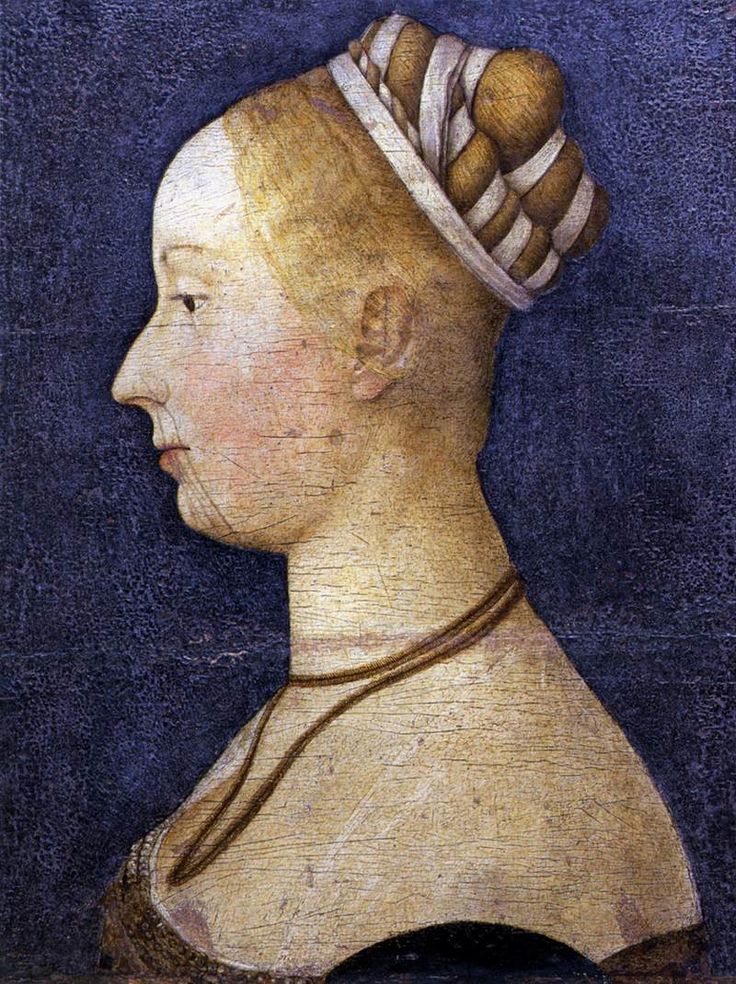
Na. She prude. Fuck that.
La Gioconda was the first image (in Italy) to show a relaxed, informal, three-quarter pose, welcoming the viewer:
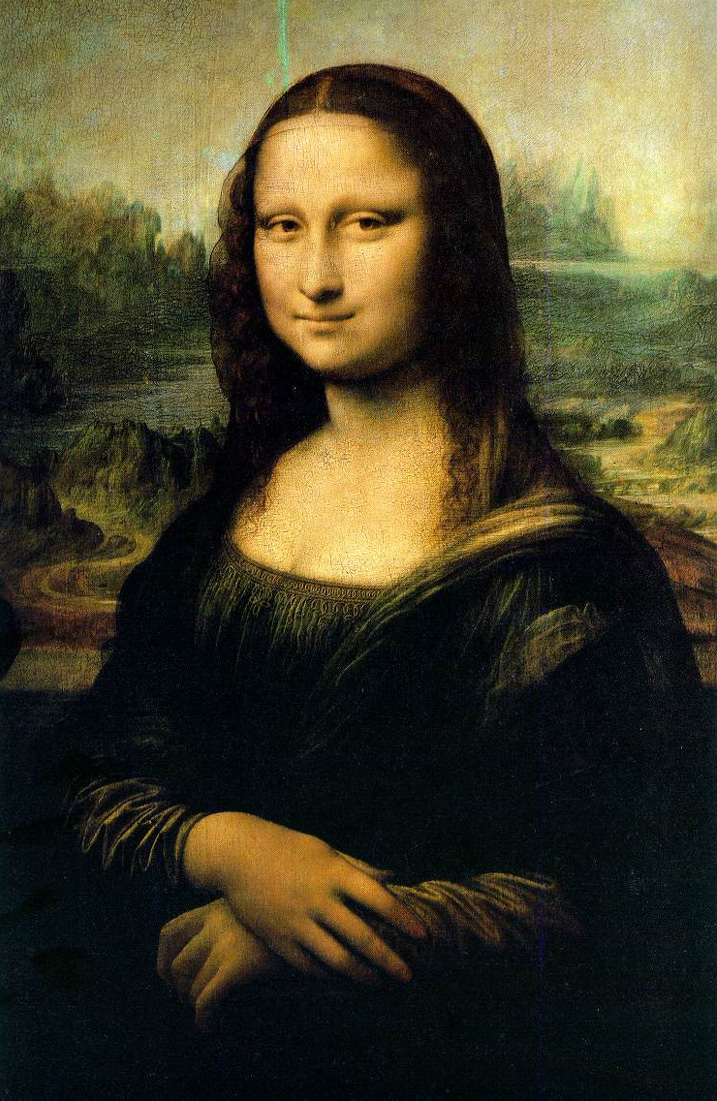
Yea. What’s up. That’s better.
Leonardo established a new style of portrait painting which has become the standard today.
1b.) Pyramidal composition of the portrait
The painting has a “wide base” appearing heavier at the bottom because of the darkness and the crossing hands. The crossed hands form the base and your eyes are naturally drawn to the apex: the face…where all the “mysterious action” is happening.
1c.) Cropping
Most images of people at the time were “full length.” La Gioconda’s cropping creates a more intimate and “close” atmosphere.
2.) Almost all portraits during this time period rocked bling-bling. Necklaces, bracelets, rings, tight clothes, etc.:
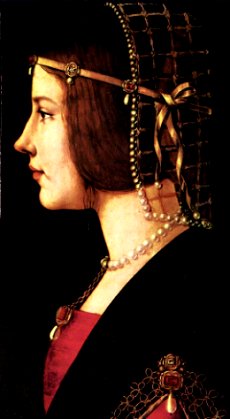
The Mona Lisa was radical in that she “wasn’t that hot,” (comparatively speaking) and exemplified simplicity and modesty (Freud believed she combined the two, major female traits: motherly tenderness and alluring seductiveness.) Even though she was supposedly a rich merchant’s wife, she “didn’t have a ring on it,” and was wearing loose, poor clothes. Yet her modest crossing of the arms suggested chastity (some scholars even think covering up pregnancy).
Here is a note found in Da Vinci’s, Treatise on Painting, years after his death:
“As far as possible avoid the costumes of your own day…costumes of our period should not be depicted unless it be on tombstones, so that we may be spared being laughed at by our successors for the mad fashions of men and leave behind only things that may be admired for their dignity and their beauty.”
3a.) Paintings at the time used an equal level of detail in the foreground and background:

I AM A ROBOT
La Gioconda, instead, has a background which gets hazy and out of focus as the distance increases. Just like life.
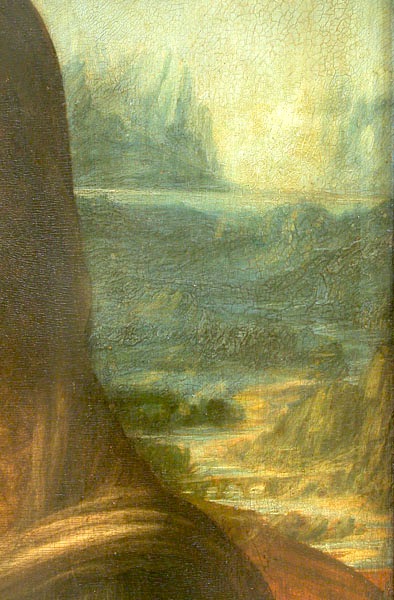
3b.) But despite the life-like perspective of the background, La Gioconda was the first to use an imaginary landscape. The landscape at the left is noticeably lower than the landscape on the right:
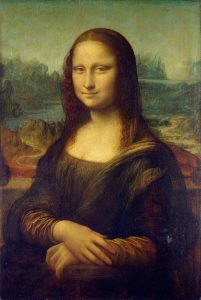
And the twisting roads and jagged mountains add to the “other-worldly” feel.
3c.) Leonardo was one of the first artists to use an aerial perspective in the background. The Mona Lisa seems to be sitting in an open loggia (balcony) with dark pillars on either side (scholars are fairly certain the picture was cut off, at first, based on Rafael’s sketch when he was apprenticed to Leonardo in 1504):
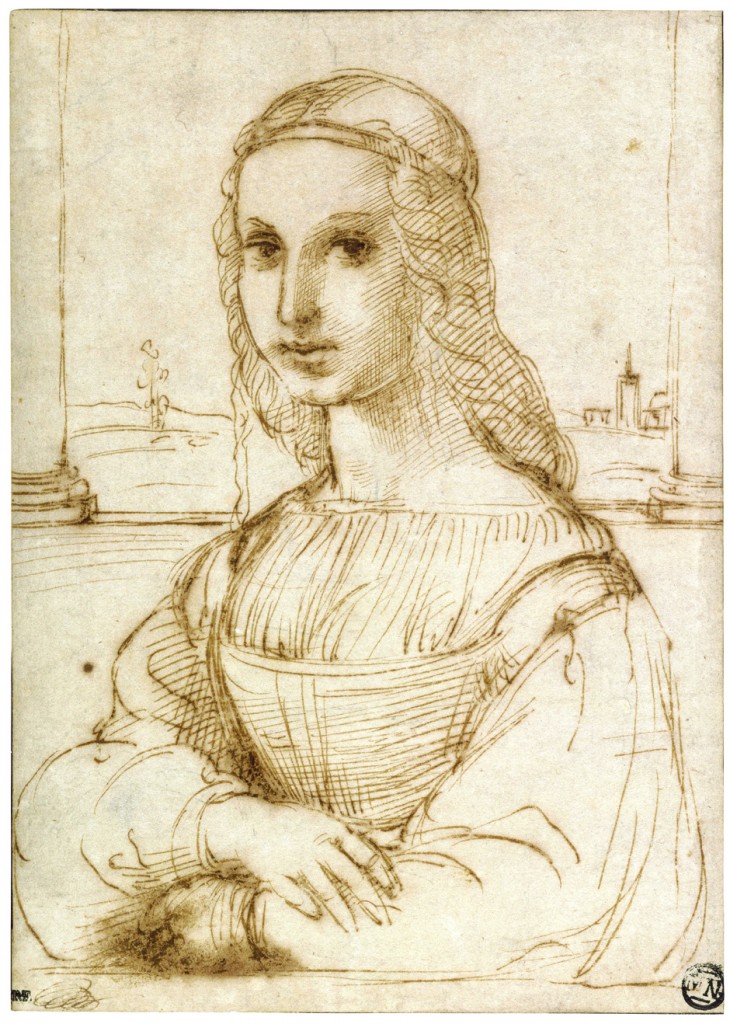
This adds again to the mystical feeling of the background image.
3d.) The horizon is on level with the eyes, connecting the subject with the landscape but also emphasizing the mysteriousness of nature.
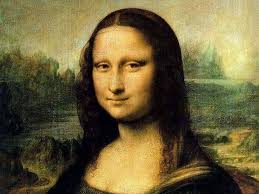
4.) Contrasting with the shrouded, misty fantasy background is an unprecedented realism in the foreground. In the human figure there is a compete lack of discernible brushstrokes. The anatomy of the hands is perfect. Da Vinci studied over 30 cadavers before beginning this work.
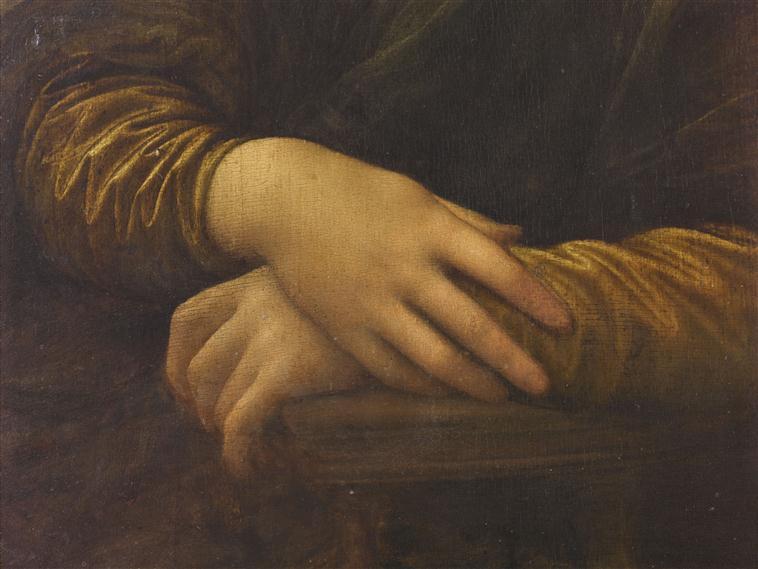
5.) Combining all of the previous points, the Mona Lisa is intensely human, intensely alive. “On looking at the pit of the throat one could swear that the pulses were beating.“-Vasari. You don’t feel like you’re looking at a picture. You’re drawn in and consumed by her face.
But even if Leonardo revolutionized portraiture, how did La Gioconda last the test of time? After Leonardo’s death, he was greatly respected in the art world, especially by Rafael, who continued his legacy.
But it wasn’t until 1864 that La Gioconda became well-known outside of the art world. And when the “general public” became aware of The Mona Lisa their attention was maintained over generations by one of art’s most enduring traits:
Mystery.
The illusion: the enigmatic smile and gaze. Is she smiling? Is she looking at me?
The smile:
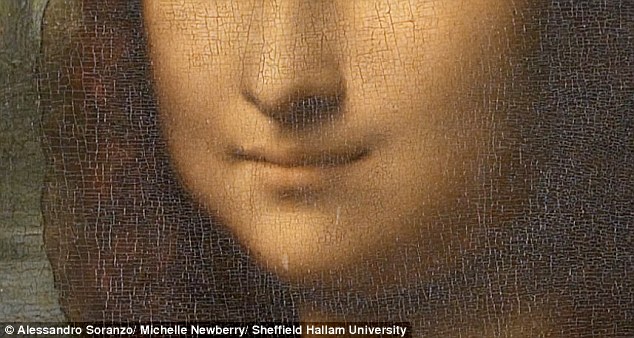
Last year British Art historians “discovered” La Bella Principessa (1496) by Da Vinci:
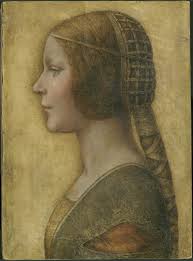
It is clear from this picture that Leonardo worked on his enigmatic smile technique before the Mona Lisa. A study of La Bella Principessa revealed that people believed that she was smiling, or not smiling, based on their distance from the canvas. So Leonardo’s enigmatic smile was intentional.
The gaze:
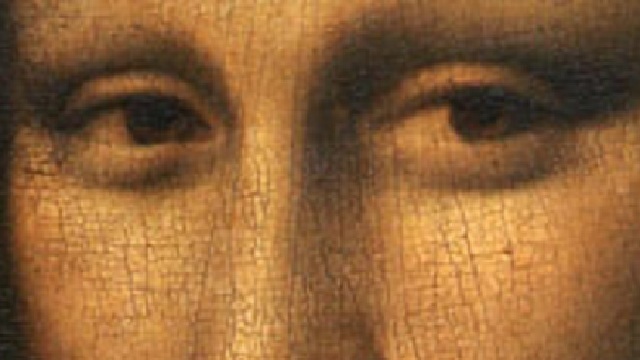
She sees…everything
The eyes seem to follower the viewer. So how did Leonardo accomplish these illusions?
Sfumato:
The definition of form in painting without abrupt outline by the blending of one tone into another. It gives the image a translucent, smoky feel which provides depth and movement. Leonardo blends colors and shades to get gradual transitions between different shapes. No other artist has been able to pull it off as successfully. No one is exactly sure how he did it.
People overestimate the precision, ability, and clarity of their eyesight. Numerous studies reveal that we actually view reality in fragments and piecemeal, while our brain fills in the gaps. Leonardo was somehow able to take advantage of this distortion so that we can’t say for certain whether the Mona Lisa is smiling or where she’s looking.
Side note: La Gioconda used to have eyebrows and eyelashes, but they were removed through overzealous cleaning.
Lastly, La Gioconda has had a tumultuous past which has only added to her fame. Napoleon had the painting in his bedroom, it was stolen from the Louvre (Picasso was suspected, arrested, and thrown in jail), people have thrown acid, a ceramic tea cup, stones, and sprayed red paint at it. But through it all she has survived…
Will someone ever paint a portrait comparable in its revolt and mystery? I hope so. I’ll keep waiting. I’ll keep looking.
Until then I’ll just have to be satisfied with my absurd and sacrilegious dreams.
Subscribe here:

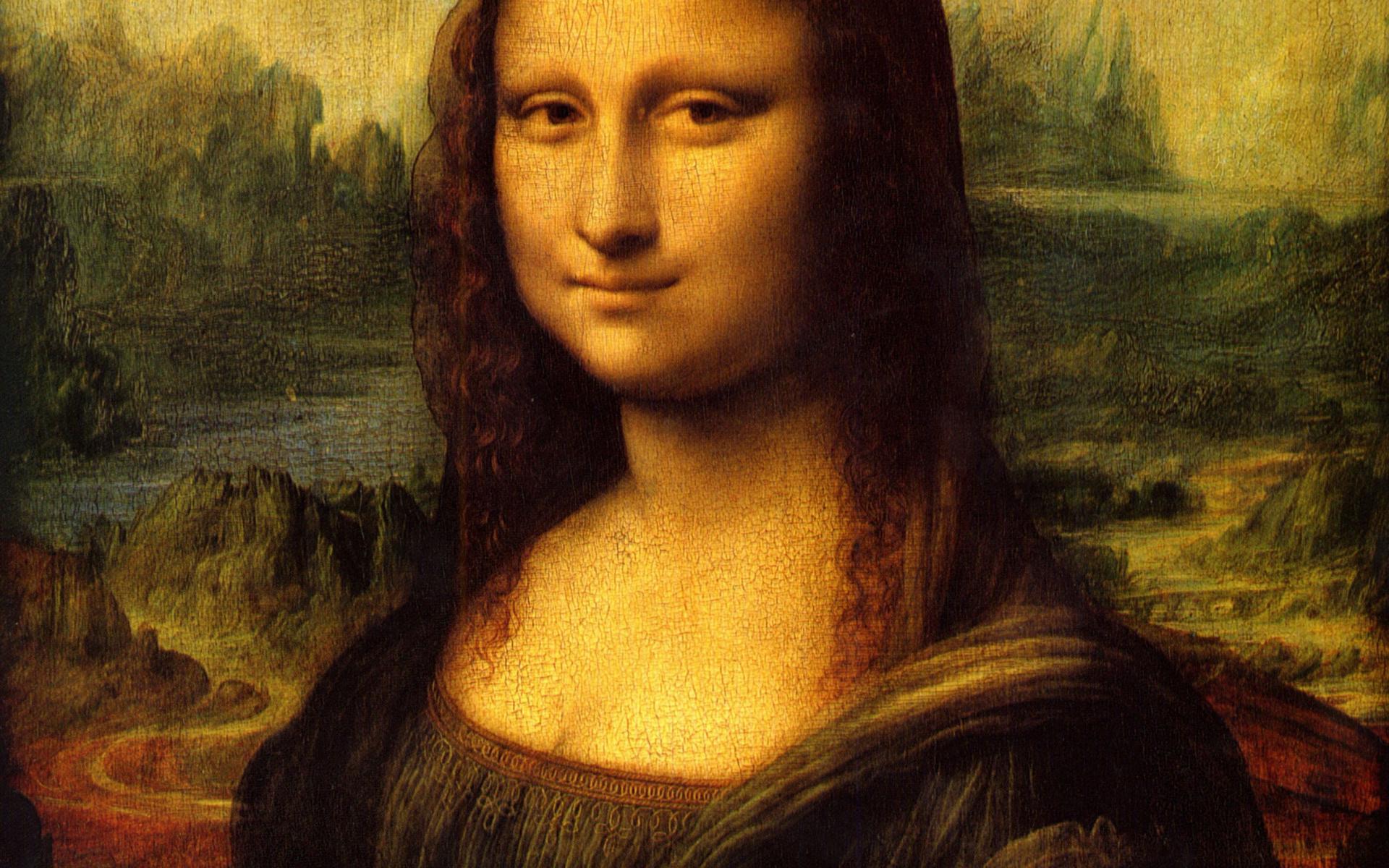
One Reply to “The Artistic Revolutions and Optical Illusions of the Mona Lisa”